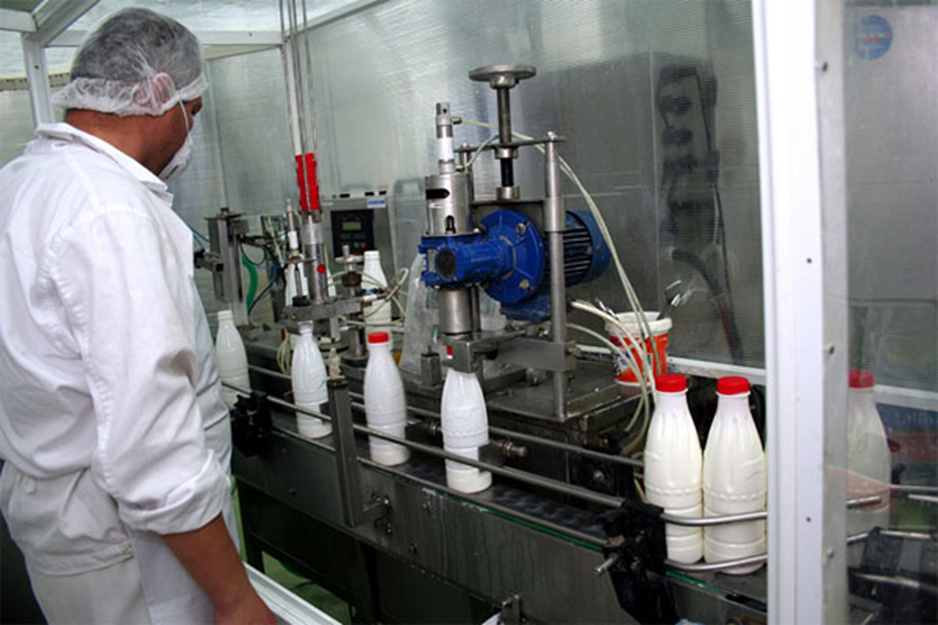
- •S. Seiffulin kazakh agro technical university
- •Astana 2011
- •Introduction
- •Exercises
- •Cause damage hold invite make overtake show surround translate write
- •5. Write questions using the passive. Some are present and some are past.
- •6. Put the verb into the correct form, present simple or past simple, active or passive.
- •7. Rewrite these sentences. Instead of using somebody, they, people etc., write a passive sentence.
- •Passive Voice
- •Perfect infinitive
- •Present continuous
- •Sources of food
- •Exercises
- •1. Translate these interesting facts about food into your own language
- •6. Rewrite these sentences. Instead of using somebody or they etc., write a passive sentence.
- •7. Make sentences from the words in brackets. Sometimes the verb is active, sometimes passive.
- •Food from animals
- •Exercises
- •2. Make 10 test questions with 5 answers about this text and try to use Passive Voice
- •3. Retell the text
- •4. Find the right answer Test . Passive Voice
- •Unit 2 Text: The food of the Nomad Grammar: Question tags
- •Exercises
- •I. Choose the right variant
- •II. Make five questions about this text
- •2. Put a question tag on the end of these sentences
- •3 Read the situation and write a sentence with a question tag. In each situation you are asking your friend to agree with you.
- •4 In these situations you are asking for information, asking people to do things etc.
- •Exercises
- •1. Rewrite the sentences using Reported speech
- •2. Retell the text using reported speech
- •3. Yesterday you met a friend of yours, Steve. You hadn’t seen him for a long time. Here are some of the things Steve said to you:
- •Exercises
- •The following sentences are direct speech. Rewrite the sentences using reported speech.
- •Here are some things that Sarah said to you:
- •Complete the sentences with say or tell (in the correct form). Use only one word each time
- •The following sentences are direct speech
- •Reported Speech
- •Exercises
- •1. Write 10 questions about this text
- •3. Make a new sentence from the question in brackets.
- •4 You are making a phone call. You want to speak to Sue, but she isn't there. Somebody else answers the phone. You want to know three things:
- •Grammar Reported Speech (questions)
- •Grammar Revision. Passive Voice, Question tags, Reported Speech
- •I variant
- •II variant
- •III variant
- •IV variant
- •Unit 4 Text: The food industry
- •The food industry
- •Exercises
- •Translate the text into your own language and learn by heart the new words.
- •Now answer these questions:
- •Complete each sentence with one of the following verbs (in the correct form): answer apply be forget listen live lose make read try use
- •Complete the sentences so that they mean the same as the first sentence. Use -ing.
- •Use your own ideas to complete these sentences. Use -ing.
- •Unit 5 Text: History of Chocolate
- •Short History of Chocolate
- •Exercises
- •Read and translate the text.
- •Now answer these questions
- •Look at the picture and write what you see and how it has been made. Use gerund or infinitive.
- •Food processing. Translate the text into your own language
- •Food packaging. Read and retell the text.
- •Complete each sentence with a suitable verb.
- •Put the verb into the correct form, to ... Or -ing.
- •Make a new sentence using the verb in brackets.
- •Unit 6 Text: Food transportation and food marketing
- •Food transportation
- •Grammar:
- •(I want you to ... Etc.) want ask help would like
- •Make and let
- •Exercises:
- •2. Complete each second sentence so that the meaning is similar to the first sentence.
- •Unit 7 Text: Problems with frozen foods
- •Problems with frozen foods
- •1 Put the verb into the correct form, -ing or to ... . Sometimes either form is possible.
- •2 Here is some information about Tom when he was a child.
- •3 Complete each sentence with a verb in the correct form, -ing or to ... .
- •Enjoy finish imagine admit avoid feel like (infml) (don't)mind can't stand give up deny
- •Manage refuse promise offer
- •Exercises:
- •1. Underline the correct word(s). Be careful: in two sentences, both possibilities are correct.
- •2 Complete part (c) of each sentence in a suitable way, starting with a verb.
- •3 Read the story and answer the questions below.
- •Unit 8 Text: Interesting Facts about British Food Grammar: Conditional sentence 1
- •Exercises:
- •1 Complete the sentences using the verbs in brackets. All the sentences are about the future. Use Will/won't or the present simple (I see / he plays / it is etc.).
- •2 Make one sentence from two:
- •3 Read the situations and complete the sentences.
- •4 Put in when or if.
- •Translate the text into your own language
- •Interesting Facts about British Food: English Pub Food
- •English Cream Teas
- •Unit 9 Text: 10 Poisonous Foods we like to eat Grammar: Conditional sentence 2 (If I knew ... I wish I knew ...)
- •Exercises:
- •1 Put the verb into the correct form.
- •2 Write a sentence with if ... For each situation.
- •Write sentences beginning I wish ... .
- •4 Write your own sentences beginning I wish ... .
- •Potatoes
- •Tomatoes
- •Almonds
- •Cherries
- •Mushrooms
- •Elderberry
- •Rhubarb
- •Castor Oil
- •Pufferfish
- •Unit 10 Text: Discover a few interesting facts that You May Not Know. Grammar: Conditional sentence 3 (If I had known I wish I had known)
- •Grammar: Conditional sentence (3)
- •If I had known you were in hospital, I would have gone to see you.
- •Exercises:
- •1 Put the verb into the correct form.
- •2 For each situation, write a sentence beginning with If.
- •3 Imagine that you are in these situations. For each situation, write a sentence with I wish.
- •4. Translate the sentences into your own language.
- •Interesting Food Facts
- •Unit 11 Text: History of Tomatoes Grammar: Phrasal verbs: form and meaning
- •1 Complete the phrasal verbs. Remember to put the verb into the correct form.
- •2 Complete these sentences in a logical way.
- •3 Look at the dictionary entry for 'go off, and match the meanings with the sentences below.
- •4 Correct any mistakes with word order in these sentences. Be careful: some are correct.
- •5 Make these texts more informal by changing the underlined verbs to phrasal verbs.
- •6 Fill the gaps to complete the phrasal verbs in these sentences.
- •7 Complete these sentences in a logical way.
- •History of Tomatoes
- •Revision for all materials
- •1 Variant
- •2 Variant
- •3 Variant
- •4 Variant
- •5 Variant
- •6 Variant
- •7 Variant
- •Additional texts Texts for reading and retelling popcorn
- •Popcorn Balls
- •The Healthy Eating Pyramid includes the following: Whole Grains
- •Healthy Fats and Oils
- •Vegetables and Fruits
- •Nuts, Seeds, Beans, and Tofu
- •Fish, Poultry, and Eggs
- •Dairy (1 to 2 Servings Per Day) or Vitamin d/Calcium Supplements
- •Use Sparingly: Red Meat and Butter
- •Multivitamin with Extra Vitamin d (For Most People)
- •Optional: Alcohol in Moderation (Not for Everyone)
- •Kazakhstan’s cuisine
- •Food and drink
- •Food and drink based on milk
- •Dishes from cereals
- •Cold first courses
- •Hot first courses
- •Second courses
- •Bread and pasta
- •Desserts
- •Meals in Britain (1)
- •Vocabulary:
- •Meals in Britain (2)
- •British Cuisine
- •Questions:
- •Vocabulary:
- •Spirits in Ireland
- •Questions:
- •Traditional American Food
- •The Story of “McDonald's” and “Coca-Cola”
- •World Food Kazakhstan: a Focus on the Food Industry
- •About Kazakhstan trade recovering in kazakhstan
- •A review of the food and beverage market in kazakhstan
- •Kazakhstan to Launch Its Own Infant Food Production
- •Kazakhstan to Develop Winemaking
- •Source: Kazakhstan Today
- •Kazakhstan: a 200-Hectare Food Terminal Being Built Near Astana
- •Halal-Industry Association Established in Kazakhstan
- •Second Record Bumper Harvest over Last Five Years in Kazakhstan – About 21 Million Tons in Store – Nazarbayev
- •Examination tests test-1
- •Irregular verbs
- •Bibliograhpy
- •Content
Short History of Chocolate
A ztec
Indian legend held that cacao seeds had been brought from Paradise
and that wisdom and power came from eating the fruit of the cacao
tree. Because of a spelling error, probably by English traders long
ago, the cacao beans became know as the cocoa beans.
ztec
Indian legend held that cacao seeds had been brought from Paradise
and that wisdom and power came from eating the fruit of the cacao
tree. Because of a spelling error, probably by English traders long
ago, the cacao beans became know as the cocoa beans.
The Spanish general, Hernando Cortes, landed in Mexico in 1519. The Aztecs believed he was the reincarnation of one of their lost gods. They honored him by serving him an unusual drink, presented in a cup of pure gold. This unusual drink was called "chocolatl" by the Aztecs.
When Cortes returned to Spain, he took the cocoa bean with him and there is was mixed with sugar and vanilla. this sweet drink became fashionable and soon there were chocolate houses in all the capitals of Europe.
A delicate tree, cacao is only grown in rain forests in the tropics, usually on large plantations, where it must be protected from wind and intense sunlight. The tree is harvested twice a year.
Milk chocolate was invented in 1876 by a Swiss chocolatier, Daniel Peter (1836-1919) of Vevey, Geneva. Daniel Peter successfully combined chocolate with powdered milk to produce the first milk chocolate. Today, the finest chocolate is still made in Switzerland, and the consumption of milk chocolate far outweighs that of plain chocolate.
Chocolate was introduced to the United States in 1765 when John Hanan brought cocoa beans from the West Indies into Dorchester, Massachusetts, to refine them with the help of Dr. James Baker. The first chocolate factory in the country was established there.
Exercises
Read and translate the text.
Now answer these questions
Do you find it difficult to remember people’s names?
Do you think it’s important to learn to cook?
What’s the most interesting place to visit in your town?
Have you ever forgotten to turn off your mobile in a cinema or a concert?
Do you think it’s possible to learn a foreign language without going to the country?
Is there any part of your town where it’s dangerous to go at night?
Do you always remember to phone your friends on their holidays?
When was the last time you promised not to come home late?
Have you ever pretended to be ill?
Have you decided to go anywhere next summer?
Look at the picture and write what you see and how it has been made. Use gerund or infinitive.

Food processing. Translate the text into your own language
M ost
foods we eat have been processed. Processing changes the raw farm
product into a form people can consume. Many processes – such as
pasteurization, canning, drying, and freezing are done to preserve
the food product. Food can also be preserved by a process called
irradiation that uses radiation to kill bacteria. Some processes
improve the quality of food. For example, homogenized milk does not
separate and tenderized beef steaks are easier to eat.
ost
foods we eat have been processed. Processing changes the raw farm
product into a form people can consume. Many processes – such as
pasteurization, canning, drying, and freezing are done to preserve
the food product. Food can also be preserved by a process called
irradiation that uses radiation to kill bacteria. Some processes
improve the quality of food. For example, homogenized milk does not
separate and tenderized beef steaks are easier to eat.
Fresh eggs, fruits and vegetables may be only washed and sorted before they the market. Or may be dried or frozen. Fruits and vegetables also may be canned or pickled or used to make juice.
 Meat
packers slaughter cattle, hogs, and sheep. They then prepare the
fresh meat for shipment to market. Meat packers also can, cure,
freeze, and smoke meat, and they make it into sausages. Processors
also slaughter and prepare chickens, turkeys, and other poultry for
market. Large amounts of fish and shellfish are cleaned and marketed
fresh. Processors also can freeze or pickle certain kinds fish and
shellfish. Dairy plants pasteurize and homogenize milk. Most dairies
also add vitamins to milk. In addition, dairies make butter, cheese,
ice cream, and yogurt from milk.
Meat
packers slaughter cattle, hogs, and sheep. They then prepare the
fresh meat for shipment to market. Meat packers also can, cure,
freeze, and smoke meat, and they make it into sausages. Processors
also slaughter and prepare chickens, turkeys, and other poultry for
market. Large amounts of fish and shellfish are cleaned and marketed
fresh. Processors also can freeze or pickle certain kinds fish and
shellfish. Dairy plants pasteurize and homogenize milk. Most dairies
also add vitamins to milk. In addition, dairies make butter, cheese,
ice cream, and yogurt from milk.
Processors manufacture many foods from basic plant and animal materials. For example, they make sugar from sugar beets and sugar cane, syrup from corn and cooking oil from peanuts, soybeans, and various other plants. Other manufactured foods include synthetic and convenience foods. Processors developed margarine – which generally is made from corn, cottonseed, safflower, or soybean oil – as imitation butter. They make egg substitutes from egg whites and other ingredients. Processors use cooked meats and vegetables in canned and dried soups, frozen dinners, and canned and frozen casseroles. They combine dried eggs, flour, sugar, and other foods in packaged dessert mixes.
Many processors add chemicals called additives to foods. Various kinds of additives may be used in foods to improve or retain some quality, such as its color, flavor, nutritional value, or storage life. Additives require approval by the Food and Drug Administration (FDA).
